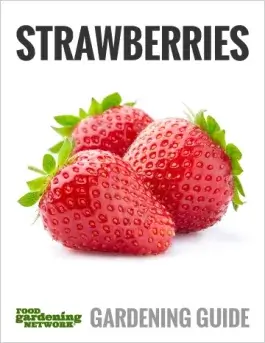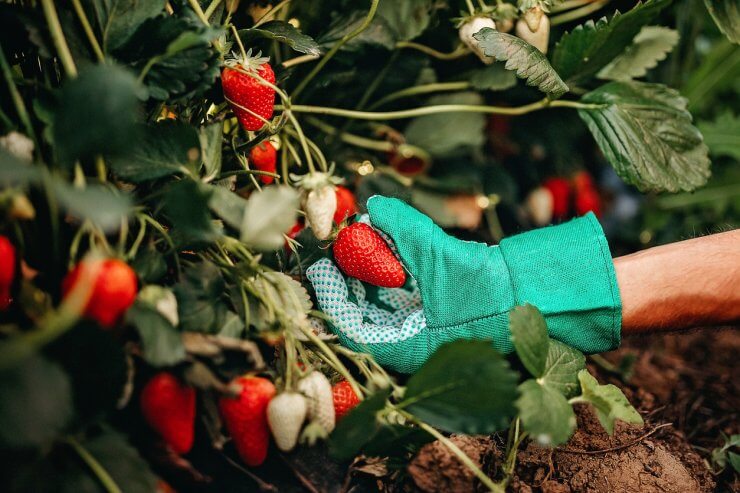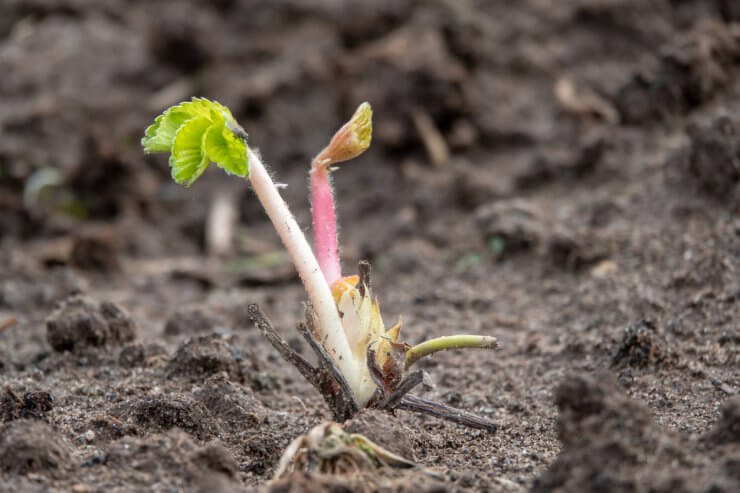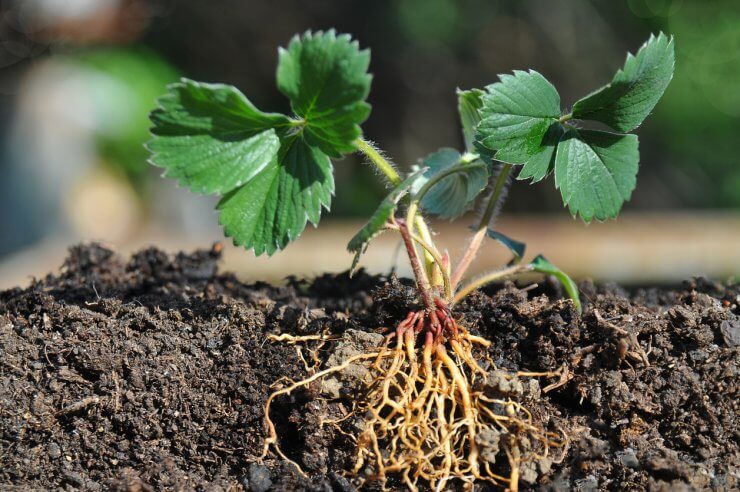
Every gardener has a strawberry-growing tale to tell. They’re just so sweet and delicious right off the plant and start producing so quickly that it’s hard not to be tempted to try your green thumb at growing them yourself.
If you’re in zones 3 – 10, most strawberries are perennials, which makes them extra worth the effort. As perennials, they generally remain productive with good yields for three to four years. In cold climates, however, some people grow strawberries as annuals, either in the ground or in baskets. When growing them as perennials, you’ll need to match the variety to your climate, not just for cold-hardiness but for chill hours. Chill hours are the hours when the temperatures are between 32 and 45°F, and while most plants require 200-300 chill hours for best fruit production, others require as much as 1,000 hours.

An Easy Go-To Method for Growing Strawberries
Let’s first talk about growing strawberries from above, because for those with limited space, it’s easy to grow strawberries in hanging baskets. Though, in order to get more than a token harvest you’ll need to have several baskets.
The advantages to growing strawberries in hanging containers include helping your plants drain properly—and drainage is crucial to avoiding root rot—and also keeping your plants out of reach of deer and rabbits that might want to feast on your berries.

Growing Strawberries from Seed
You can grow strawberries from seeds, but it’s much more common and effective to buy potted plants or bare roots. You can buy plants at local nurseries or box stores, but you’ll largely have to buy seeds and bare roots online.
When starting from seeds, sow them directly in the garden in early spring. It will take up to a month to see signs of germination. Plants generally won’t produce any fruit until the following year. If you remove all the flowers in the first year, you’ll have larger, stronger, more productive plants the following spring.

Growing Strawberries from Bare Roots
If you buy bare root plants, they’re dormant plants that will look dead, but they aren’t—or they shouldn’t be. Check your bare root plants for signs of rotting or mold, and reject the plant if you find them. The crowns of the plant should be intact and roots should look vigorous.
In chilly USDA Hardiness Zones 6 and lower, your strawberry plants should go into the ground in spring, as soon as the soil is workable. That will give them time to become established before the cold weather sets in. In warmer zones 7 and up, you’ll typically plant around Labor Day for harvests to begin the following spring.
When planting bare root plants, be sure to remove any old leaves from the crowns and soak the roots in water for at least an hour. You must pay attention to the depth at which you plant bare root plants: The crown of the plant, where the leaves originate, should just sit on top of the soil.
If you plant too deep, the crown will rot and leaves won’t be able to emerge from the soil. If you plant too high, the crown will dry out and can die.
Many will decide to simply buy seedlings that come in pots from their local garden supply store, and that works too!
For both potted and bare root plants, make sure there is plenty of room for the roots and that they’re spread out before covering them with soil. Potted plants should be planted soon after purchase, after the last risk of frost. Keep plants watered well until they’re established.
Although they’re perennials, strawberries don’t last forever. They’re most productive in the first two to five years of life. You’ll notice a drop in productivity and will want to replace them every few years.
Start Growing Strawberries at Home Today
Strawberries are among the most popular home crops, growing everywhere from hanging pots to open land gardens. In our Strawberries Gardening Guide, you can get all the details that go into raising delicious, sweet berries of your own. We’ve got everything from the history of strawberries to planting to winterizing and, of course, eating. You’ll want to check out our recipes for salad, strawberry shortcake and even strawberry smoothies. These recipes make it all the more rewarding to grow your own strawberries. Finally, you’ll get nutritional benefits and some sweet home beauty remedies for the crimson berry. If you liked this article on strawberries, check out our Strawberries Gardening Guide!
Have you tried growing strawberries from seeds, seedlings, or both? Which method do you prefer—and why? Please share your experiences with us.


 Previous
Previous

